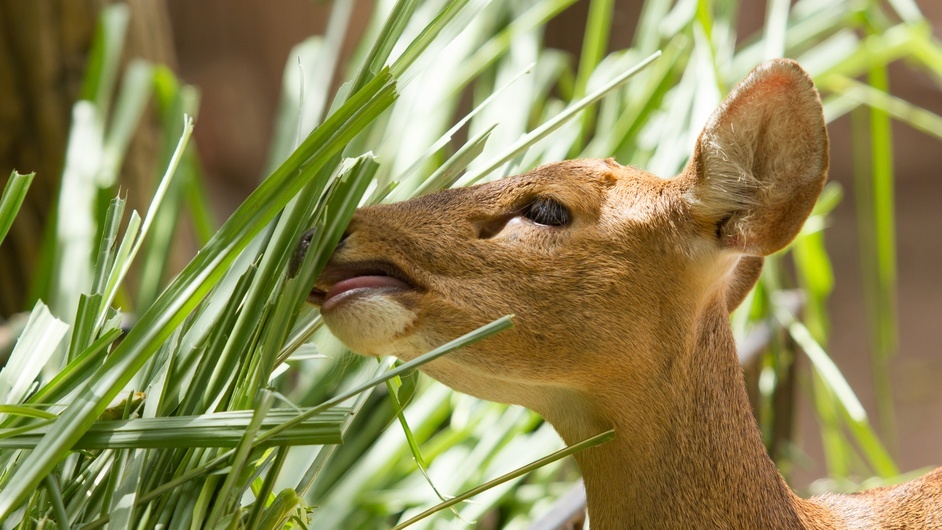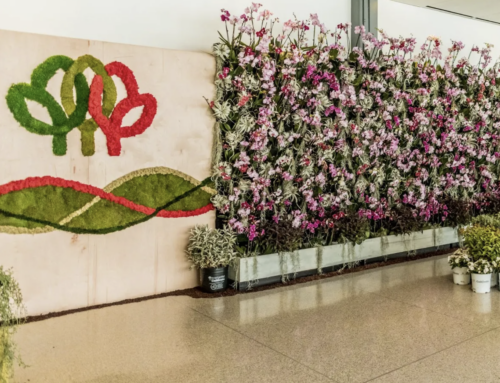Damage caused by deer brings significant disappointment to gardeners, horticulturists, and homeowners, not to mention serious damage to agriculture crops. Yet, many people (not I) have a love-affair seeing deer move about in their yard. It is understandable I guess, deer are such large beautiful mammals, still technically wild but able to move freely into a domesticated home environment. Though fascinating and impressive, their visits come with consequences.

From childhood memories, we typically would see deer on TV nature shows or in rural areas, or their carcasses strapped across bumpers or atop cars of proud hunters. (Now that was an eye-opener for a carload of kids to view while stopped at a red-light). Today, we see them by simply looking out the back window of our home. Unlike nuisance squirrels, rabbits, or raccoons that are safely trapped and removed, deer easily flee at will and we really can’t do much about it. Following mice, rats, and raccoons, there are not many mammals that have successfully acclimated into the suburban and at times, urban environment as well as deer. As long as there is a nearby park, golf course, cemetery or small woodlot deer can take cover as needed, then strategically launch attacks on our home gardens and landscapes.
In their natural habitat, deer travel miles and browse occasionally on coarse meadow grass, weeds, and twigs. The other option is to stroll around the suburbs and snack on our garden plants like they’re a smorgasbord of salads. Can you blame them?


Above, we can see a once 8″ Hosta, eaten to the ground, another Hosta with only stems left, & daylilies where all buds & foliage have been eaten away by deer.
I have always taken the effort to prevent insect and disease damage to plants seriously, and to a lesser extent, the minor holes in foliage & spots on leaves. In many cases, the damage by the pathogen, or bug, is more cosmetic than detrimental, yet despite my explanations, I’ve been criticized for failing to stop it. Ironically, that same client enthusiastically tells of the marvelous sight of seeing deer wander about their home garden. The insect damage I was unable to prevent amounted to less than 5% of the leaf surface area. The gentle grazing by the beloved Bambis resulted in the consumption of all flowers from the roses and daylilies. To some, the thrill of seeing deer visit their yards takes precedent over the concern for serious damage to their plants, or evidently, from the sight of these beasts, they simply forget.
Methods of deer damage prevention abound on the internet, but we won’t discuss these methods at this time. Be advised that many YouTube garden experts share personal, (often entertaining) testimonies that may have actually worked wonderfully for a charming guy named Elmer in Fairfax, MO, but it may not work for you. One cannot assume their advice applies to your situation at your location, or that it is safe. Best to gather your information from the Agriculture universities that have research to back up their recommendations.
If you want to avoid the repellent sprays, fences, mesh wire, motion detectors, and home-spun concoctions like the globs of human hair jammed in a netted bag hung from trees (when you come upon one – you swear it’s a scalp) there is a better way. It starts with planning ahead with your plant selection. Combat deer damage by choosing those plants they rarely eat. For years, there have been lists of plants “resistant” to deer. Now, most of us in grounds management are more cautious of the word “resistant” which implies they will not be eaten. Each year someone somewhere has evidence of deer that did not read the rules. There are so many factors that influence deer damage to plants: population of the local deer herds, season of the year, food availability, etc. By avoiding the “resistant” term, we rather refer to those plants as low preference.
As with advice for repelling deer, the lists of recommended plants to avoid deer damage is quite extensive in an Internet search. With so much available, especially from university studies, we see no need to repeat the many plants to consider. Instead, we focus on, as with most of our articles, those plants frequently raised by growers and readily available in garden stores.
Annual Flowers of Low Preference to Deer:
- Begonia (yes throw the BIG Series in there from a past blog post)
- California Poppy (they almost done-in Dorothy; deer can’t count on having a Tin Man and a ScareCrow to help them out)
- Cleome (aka Spider Flower)
- Lantana
- Salvia
- Snapdragon
- Sweet Alyssum
- Verbena
- Vinca (Periwinkle)
- Zinnia
- Marigold – usually not bothered but if hungry enough deer will eat them
- Petunias – same as the above
-
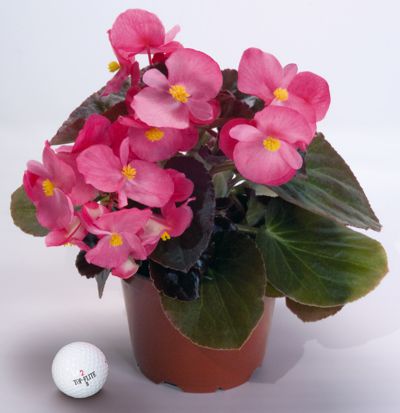
BIG Series Begonia -
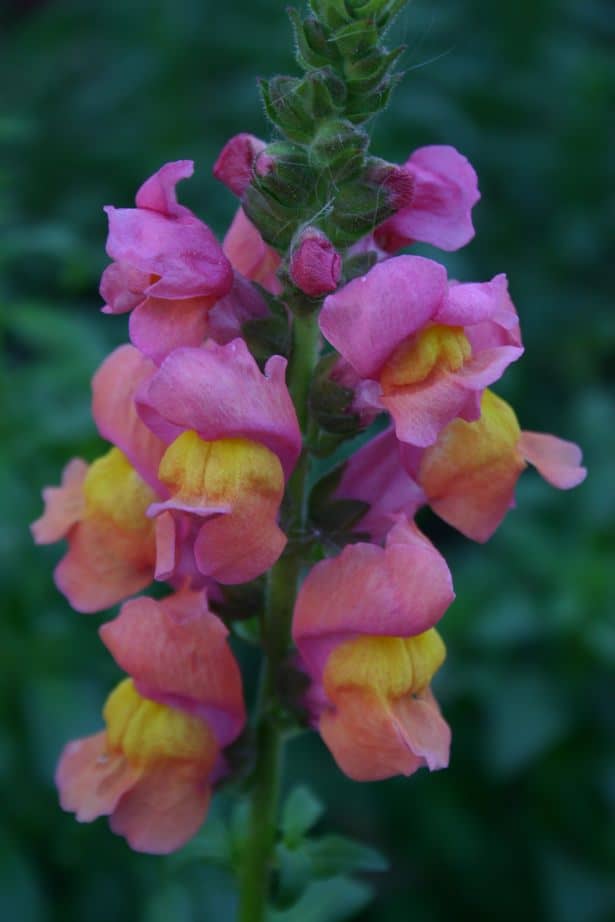
Snapdragon -

Zinnia
When I built the list of Perennial Flowers of Low Preference to Deer, it exceeded 50 species, and there’s too much redundancy to what can be found online. The list of Annual Flowers is much shorter and more likely raised by local growers and sold in garden centers, thus justified listing those.
From the list of 50 Perennials though, there are a few worth noting. These plants, rejected by deer, are plants we discussed in an earlier posting on Medicinal Plants beneficial to people.
- Yarrow
- Echinacea
- Hypericum (St. John’s Wort)
- Lavender
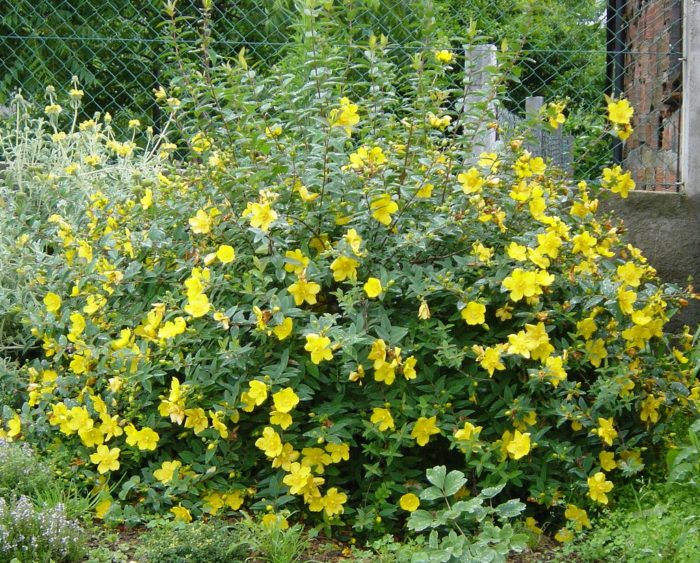
Photo: Flickr
For whatever reason, the deer do not find these plants “medicinal” and that’s fine by us.
-Rob McCartney, Horticulturist
Please feel free to contact me with any questions or for more info at: [email protected]

